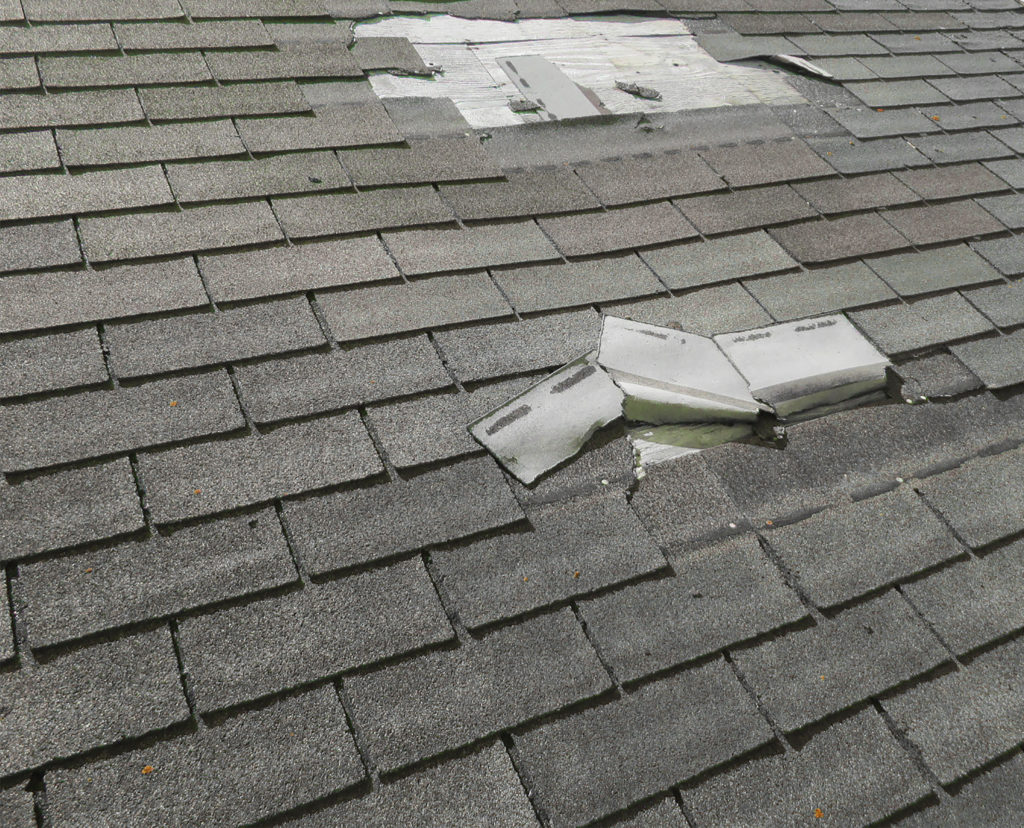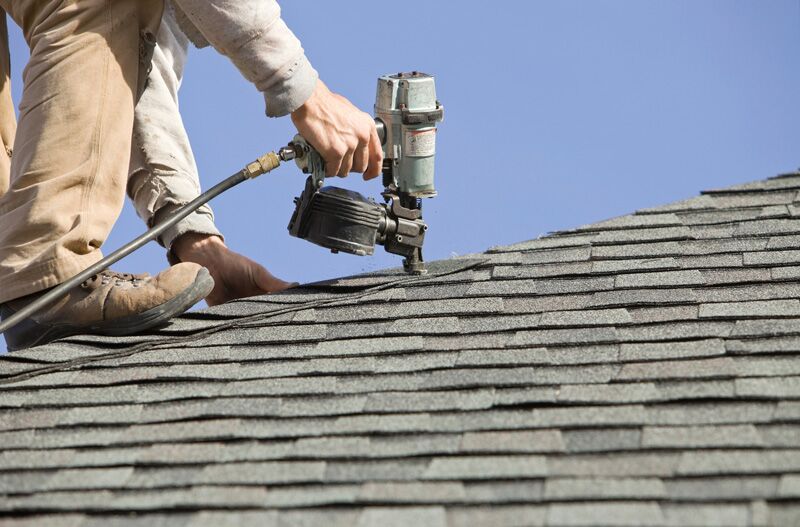The median age of most homes in Forth Worth, Texas, is 31 years. It may seem like an insignificant statistic, but it’s an important one. The age of your home is a good indication of how old your roof is.
The average lifespan of a typical roof is 20 years. This will vary depending on the type of roof you have.
You’ll know when you have roofing problems. Because regardless of the type of material your roof is made from, they all show signs of degradation as they get older.
Many roofs made from asphalt materials will start showing signs of wear and tear after 12 years. In contrast, a metal roof can go as long as 75 years without issues. You don’t want things to get worse before you realize you need significant repairs.
It can cost you more in the long run as it creates additional problems. If you live in an older home, it’s good to know some of the more common roof problems you should look out for.
Read on to learn a few and what you can do about them.
Signs You Have Roof Problems
Roofing problems are often unexpected. They can also go unnoticed without regular inspections.
You can prevent extensive damage by catching issues early on. Make it a habit of checking your roof to determine if you have any of the following issues:
- Missing or damaged flashing in several areas
- Loose or missing shingles
- Exposed or loose nailheads
- Blistering, curling, dry, or cracking shingles
- Granules in your gutter
- A sagging roof
- Dirty or dark areas on your roof
You may also find evidence inside your home. This can include damage in your attic or on the ceiling of your home.
An increase in your energy bill may also be a sign. This can occur if your leaking roof is letting bad air in and allowing good air to escape. There may also be fluctuations in your bill if you don’t have enough ventilation in your attic.
You should also have an idea of the age of your roof, as these problems may become more evident the older your roof is.
Is Age Only A Number?
Not when it comes to your roof. To get an idea of how long your roof will last, you’ll need to factor in the type of roof you have. Roof lifespans vary with different types of roofs.
There may also be specific problems you need to look for based on the roof material used. Here are a few roof types and their expected roof lifespan.
Asphalt Roofing
It’s the most common type of roof used in Fort Worth, along with metal roofs. It tends to withstand the weather experienced in Texas very well. An asphalt roof can last between 15 to 30 years.
Metal Roofing
The other popular Texas roof. Metal roofs can be either aluminum or steel. They provide long-lasting protection for your home. Metal roofing can last between 40 to 70 years.
Slate Roofing
Slate roofs are heavier than most other roofs. This can make it more expensive as well. However, a slate roof can last as long as 200 years!
Wood Roofing
An unconventional choice, but wood roofs can add an interesting feel and look to a home. Wood also ages well. A wooden roof can last for 30 or more years.
Clay Roofing
Clay roofs can be a beautiful addition to your home because of their unique color. It’s also affordable and requires little maintenance. A clay roof can last between 50 to 100 years!
It’s best to do the research based on the type of roof you have. This will let you know what signs indicate that it’s time for roof repair services.
5 of the Most Common Roofing Problems

Proper maintenance is the key to a longer-lasting roof. But even the best roofing materials deteriorate after facing the natural elements. Fort Worth, like many US cities, experiences hot, humid summers. This is often followed by cold and windy winters.
These winds can become even more extreme. The city is one of the windiest in America, with average wind speeds of 12.8 mph. Out of all the cities in Texas, Fort Worth also snows the most because it has the highest elevation at 653 feet.
The city even experiences the occasional hail storm. In April, North Forth Worth had to deal with cracked windshields and dented roofs due to heavy hail. These are just a few of the things that can shorten the life of your roof.
1. Roof Leaks
This is one of the most common signs of damage to your roof. However, leaks may not be evident immediately.
You may never need to place buckets in various rooms in your home when the rain starts. And you wouldn’t want to, as this would indicate that the damage is extensive.
But you may see more subtle telltale signs. These can include:
- Water stains on your ceiling or walls
- Signs of mildew
- Dampness on the walls
- Peeling paint
This could be as a result of broken shingles, slate or tiles, or cracked flashing.
Solution for a Leaking Roof
As varied as roofs might be, so too are the reasons your roof might be leaking. You’ll first need to identify the cause before you can solve the problem.
You’ll need to locate and examine the leak. Then trace it from the water stains on your ceiling and work your way up.
This isn’t an easy task, and accessing your roof could be dangerous. So it’s recommended you hire a specialist for this type of roof problem. Once they identify the source of the problem they will:
- Remove and replace damaged roof vents
- Remove old shingles and roof paper
- Cut away and remove damaged roof deck
- Replace it with a new roof deck patch
- Lay roof underlayment or paper
- Place the new shingles on the affected area
This requires a certain level of expertise. It can take one to two days to complete, depending on how many leaks you have and the extent of the damage. A professional can get it done right the first time so that you won’t have to worry about additional issues.
2. Damage From Ice and Snow
For many, Fort Worth’s cooler winters might be a welcome change from its hot, muggy summers. But colder temperatures can lead to cold weather roofing problems.
These are unique as they involve the melting and refreezing of snow and ice. This can create many issues in certain areas of your roof.
The water from melted ice and snow can seep under your shingles. If it refreezes while underneath, it can push against and lift the shingles or flashing. This creates gaps that water and snow can enter.
This slowly affects the integrity of your roof over the years.
Solution for Ice and Snow Damage
Roof repair service isn’t recommended in winter. You should schedule routine inspections before and after the winter months.
Do this in the fall to repair any damage before the winter weather arrives. Then repeat in spring to catch any issues from the previous winter.
If the roof repair company finds any issues, they can do the necessary maintenance. This ensures your roof is in good shape for future weather changes. This will eliminate the need for emergency roof repair.
They may also recommend specific materials, including single-ply membranes or Ethylene Propylene Diene Monomer (EPDM). EPDM is a type of synthetic rubber that has a high resistance to inclement weather. Both can withstand damage a lot better than some other traditional roofing materials.
3. Poor Installation
It’s important to know when it’s time to call a professional. When you’re installing your roof is one of those times. However, you must ensure you use a reputable company.
There might be the temptation to base your choice solely on price. But shoddy workmanship will end up costing you a lot more in the long run. These are some of the things you will notice if the work done on your roof is not up to standard:
- Blisters
- Adhesion problems
- Premature aging
- Wrinkles
- Leaks
Poor installation is one of the main reasons for shorter roof lifespans. It can also increase the occurrence of mold and other complications.
Remember, a roof can last for as long as 30 years. You shouldn’t experience any of these problems in the first few years after installation.
Solution for Poor Roof Installation
The only solution to poor roof installation is to have your roof installed again. Unfortunately, it’s not a case of doing it twice because it was so nice. It will involve an additional investment to finally get it right.
It’s the reason that finding a roofing company with extensive expertise is crucial. This will save you a lot of time and money.
4. Clogged or Broken Gutters
A broken, clogged, or defective gutter may cause water to back up in your guttering system. Once this water has nowhere else to go, it may start seeping into the eaves of your home, causing them to rot.
Your siding may also start to rot as a result of a defective gutter. Again, with nowhere for the water to run once backed up, it can start running down the side of your home. This can also cause parts of your landscape to start eroding.
Damaged gutters can result in detached downspouts. The good thing is, these issues are usually quite noticeable. Once you realize there’s an issue with your gutter, there are several things you can do.
Solution for Clogged or Broken Gutters
Even if you don’t notice any damage to your guttering system, it’s a good practice to check them regularly. This should also involve removing any debris to prevent clogs. You can prevent excessive debris such as leaves and twigs by installing screens on the openings of your gutters.
If during your check you do notice damage, reattach downspouts where possible. If this isn’t possible or damage to the gutters is extensive, you’ll need to replace them.
5. Failing Granules
If you have an asphalt roof while you’re conducting your routine gutter inspection, check to see if granules are accumulating in your gutter. Asphalt shingles consist of granules made from minerals and crushed stone.
They protect your roof in several ways. They absorb the sun’s harmful UV rays. They also contain copper, which helps prevent the growth of algae over an extended period.
However, when asphalt shingles start to deteriorate, these granules can become a problem. Long periods of exposure to hail as well as extreme weather conditions can loosen the granules.
You’ll notice bald patches on your roof as the granules start to fall off the shingles. This and roof discoloration are key indicators that you need to replace your shingles.
Solution for Failing Granules
The good news is that failing granules don’t always lead to a complete roof replacement. But it all depends on the age of your roof and the extent of your roof’s granule loss. If minimal, repairs may simply include replacing any damaged shingles.
However, an inspection is the only way to know just how bad the damage is. Consult a roofing company to determine which solution would be best for your situation.
Know Your Problem and Get the Best Solution

Roofs are an often overlooked part of the home. That’s because most homeowners don’t consider them until there’s a significant issue. Unfortunately, by the time you see signs of damage, your roofing problems may be extensive.
One way to avoid this is to ensure you have regular inspections and maintenance.
Ferris Roofing Contractors, Inc. is a Fort Worth roofing company committed to excellence and the highest level of customer service. Our residential roofing services include repairs, installation, re-roofing, and maintenance.
Schedule a FREE roofing estimate today. We’ll identify your problem and provide you with the best solution.


